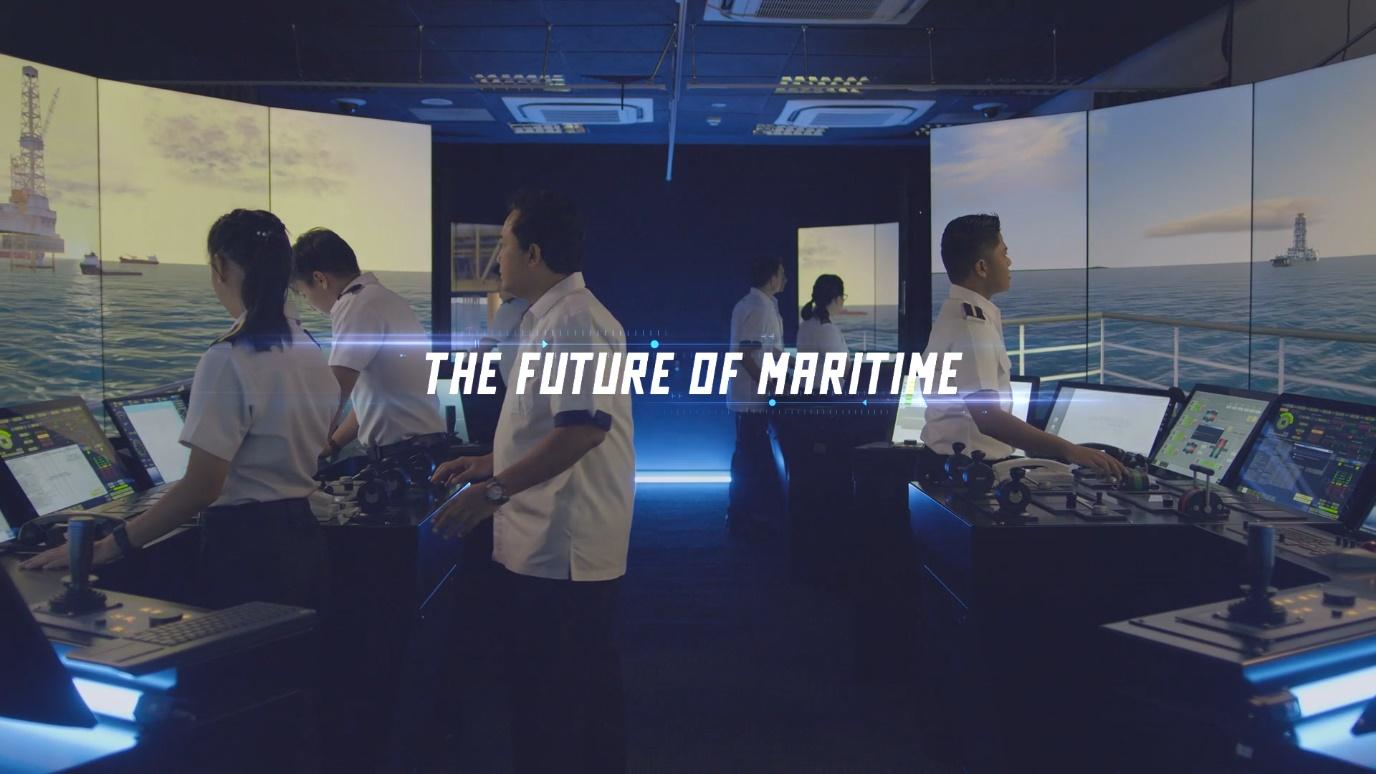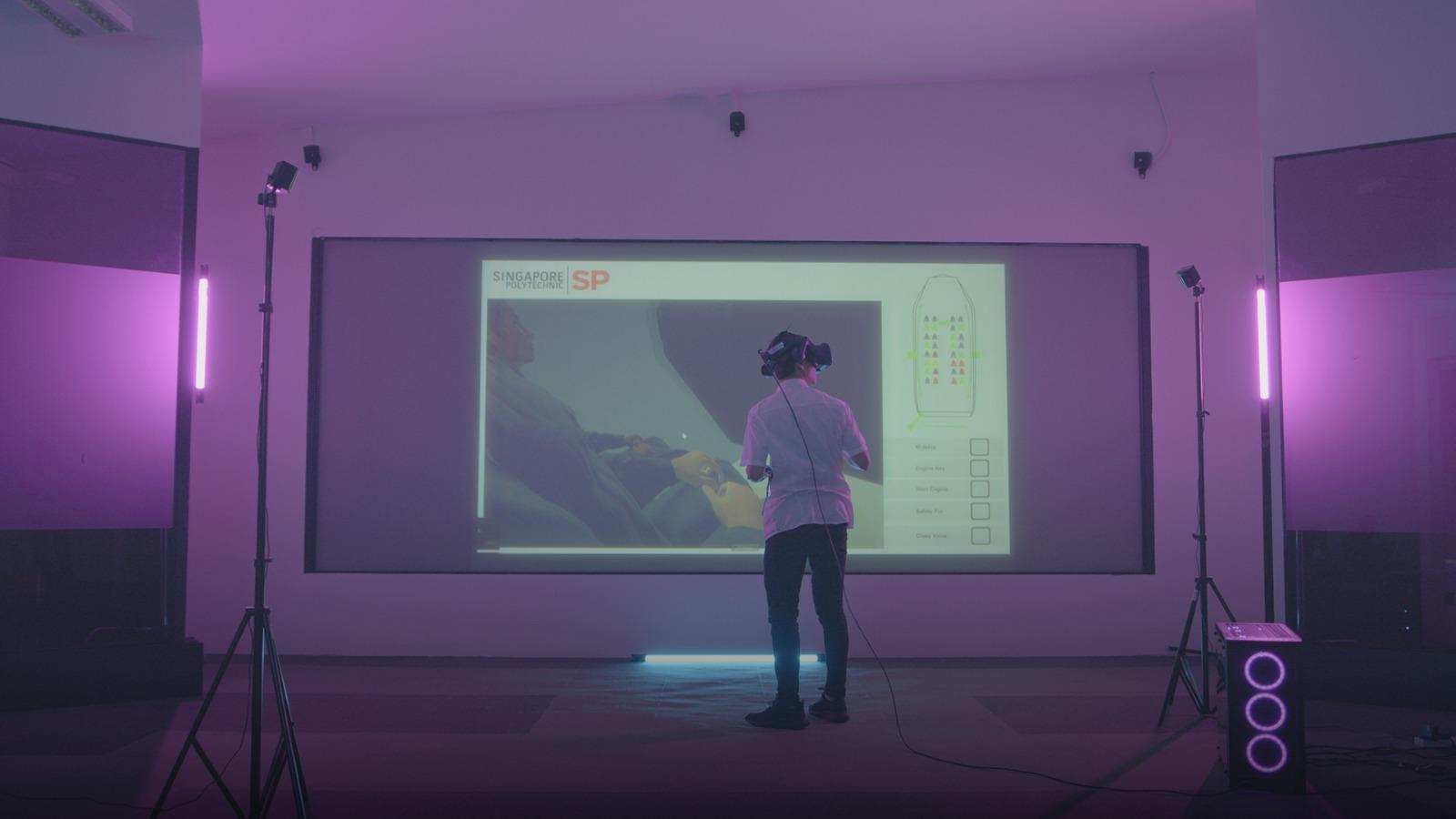The Centre of Excellence in Maritime Safety (CEMS) at Singapore Polytechnic (SP) was newly launched in September last year, with a focus on navigational and operational safety for the maritime community. The S$14 million centre was set up by Singapore Maritime Institute (SMI) and SP, just as the maritime industry is set to transform with the advent of autonomous technologies.

CEMS will equip maritime training with future-ready technology
Grooming future-ready navigators
Safe navigation is paramount to the shipping industry. Mr Daniel Zhang, Centre Director for CEMS at SP, highlighted that together with the Singapore Maritime Academy (SMA), CEMS will equip the next generation of seafarers with the right skills to navigate the Singapore waterways, especially with the upcoming Tuas mega port.
"The traditional perceptions of the maritime industry have to be changed. With technology advancements and IoT enablers, there are opportunities to redefine work and the workplace together with the young generation for the maritime industry," he said.
With new sensors, communication technologies and smart algorithms, Mr Zhang believes that remotely operated vessels and autonomous vessels will be made possible for commercial shipping in a foreseeable timeframe. He explained that this will lead to a paradigm shift which requires a very different set of skills.
"With digitalisation re-shaping our maritime industry, new navigational technologies such as e-Navigation will enhance situational awareness and predictive maintenance of key equipment on-board vessels will enhance operational safety," he said. "These new technology enablers, however, require new skills and competencies to ensure that technologies are not overwhelming, but are complementary to the seafaring experiences of our captains and ship crew."
Training with new technology
Together with SMA and support from Maritime and Port Authority of Singapore (MPA) and SMI, Mr Zhang shared that CEMS is in the process of establishing a dedicated advanced navigational research simulator which will focus on future systems, future concepts of operations and future competencies.
More often than not, human errors contribute to more than 75% of the marine incidents, he highlighted. Situational awareness remains a key challenge for manned vessels in congested waterways where collisions and near misses are much more frequent. Through data analytics, video footages of seafarers' training can be analysed for technical competencies, and behavioural insights could be studied using visual recognition and machine learning.
"This opens up new opportunities to enhance our training pedagogy for seafarers in behavioural competencies such as communication and teamwork on the bridge," he said.
Beyond that, virtual reality (VR), augmented reality (AR), mixed reality (MR) and artificial intelligence (AI) are expected to open up a new realm of opportunities for new training modules to enhance navigational and operational safety.
"Visualisation tools such as AR/VR and smart algorithms on IoT devices backed by AI engines can enhance decision-making in complex maritime traffic scenarios, especially in congested Singapore waters," he explained.
Mr Zhang shared that CEMS is also capitalising on VR technologies to develop tool kits for a 360-degree view ship familiarisation course, which will lower the cost of new crew training before they go on board a vessel.

VR technologies enable learning and familiarisation courses for cadets while ashore
With the increasing availability of computational resources and ship-to-ship or ship-to-shore connectivity at a lower cost, he shared that smart algorithms on CDCA (Collision Detection and Collision Avoidance) and predictive/prescriptive maintenance are already a reality and will be more pervasively used for future vessels.
"These visualisation tools, coupled with decision support functionalities, will elevate the situational awareness of the crew and more informed navigational decisions can be made," he said. "Visual overlays using AR can also be used to give clear instructions for maintenance tasks and make the maintenance of on-board equipment much more intuitive."
Maritime Centres of Excellence
CEMS will complement the two existing Centres of Excellence (COEs) to keep Singapore's next generation port safe, sustainable and smart:
- Centre of Excellence in Maritime Energy and Sustainable Development (MESD) in Nanyang Technological University focuses on the green initiatives in Singapore's port and port waters
- Centre of Excellence in Modelling and Simulation for Next Generation Ports (C4NGP) in National University of Singapore looks into the smart algorithms for port logistics optimisation
- Centre of Excellence in Maritime Safety (CEMS) in Singapore Polytechnic aims to enhance navigational safety of ships in Singapore's port waters

